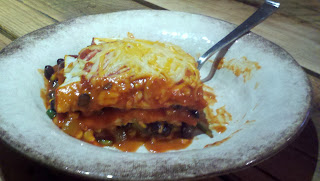By Mary Rose Roberts
Artists working in Chicago often have an edge or grittiness to their work. This includes Melissa Kolbusz. Since 1999, Kolbusz has used the city as a base to make handmade, wearable artwork. The pieces are street friendly but also sophisticated and are made from recycled, reclaimed and surplus materials--such as alternator wire, tubing and bike chain. Reusing and renewing fits our mission, so we wanted to educate readers about her wearable art. Plus, you can win a free pair of Kolbusz’s earrings. To win, “Like” NextGenGreen’s Facebook and mention this post or leave a comment below. This random giveaway expires May 1, 2012 at 12:01 a.m.
As a bonus, she is offering readers a 50% off COUPON CODE for online purchases. E-mail me to redeem the coupon code at nextgengreenmedia@gmail.com.
What materials do you use?
 |
| CHAOS bracelet |
Over the years, I’ve been developing relationships with different companies to collect their scrap, surplus and overruns. So, I use many different materials. Each collection is dependent on the materials I find. Current collections include scrap neoprene, recycled bike chain, surplus magnet wire and the recycled labels of EFFEN vodka bottles.
What is your inspiration?
My inspirations come from the many different materials that others view as useless.
Why is using recycled materials important?
It’s just practical. We create so much trash in our daily lives and as we continue to create new products, it is important to consider using recyclable and/or recycled materials. We can reduce so much from going into landfills by considering what is already available and applying some creativity.
What is your goal with the product?
My goal is to create something beautiful from discarded, usable materials. So much trash is created in our daily lives and especially in the manufacturing and business sectors. My hope is to use my design background to make a little dent in that situation while doing something that comes naturally and I enjoy.
Do you have a website or Facebook page for your work?
I have a website where customers can shop directly or view a list of stores that carry the items:
Wired Resistance www.wiredresistance.com/
On Etsy www.wiredresistance.etsy.com and
On Facebook www.facebook.com/wiredresistance
 |
| Giveaway |
These earrings are triple scrapped. The material comes from a Chicago area rubber products manufacturer. I use the discarded pieces to make the [wired] hangtags and then with what is left over from the large punchout, I make these earrings. They are put together with reclaimed stainless steel tension springs and steel wire.


.jpg)





.JPG)



.JPG)































